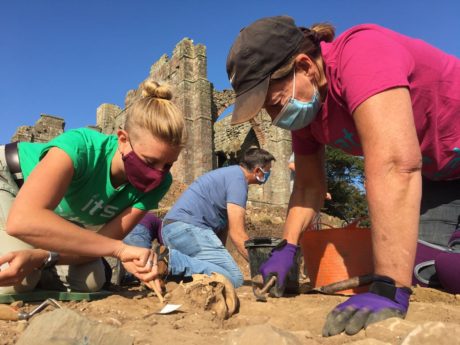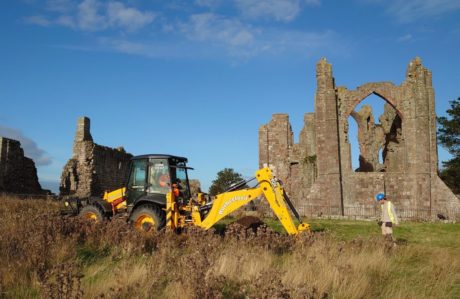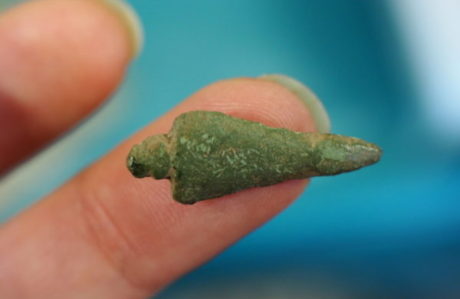
Nearly a week into our excavation at Lindisfarne, and we’re still finding lots of human bones. But are they in situ Anglo-Saxon graves, or have they been previously disturbed? Here’s how an archaeologist can tell.
Lindisfarne is steeped in history; founded by King Oswald in AD635 King Oswald, it soon became a tantalising target for the Vikings, who sacked the island in AD793. But one thing that remains a mystery is where the monks who lived here were actually buried.
Over the last few days, we’ve been finding plenty of human bone. The question we have is whether this means we’re finding actual graves, or whether these bones come from graves that have later been dug up, and then reburied once again.
One of the first clues an archaeologist will look for is a grave cut. As an archaeologists excavates, the outline of the grave becomes visible. The fill is usually richer, darker and more loose than the surrounding ground, and leaves a visible difference in the soil between the ground that the grave was dug into, and the soil that then was used to fill it.
That’s because when soil is disturbed and put back, it retains more water than the surrounding soil. Coffins and bodies may also add organic material to the mix as they decompose.
Depending on the type of soil, sometimes the only thing left of a grave is the coffin nails. These can also be a good giveaway that this was an original grave.
But not all graves were made of wood, and sometimes they were simply lined with stone, in what is known to archaeologists as a ‘cist burial’.
Human remains are usually laid either on their back (supine), on their front (prone) or in the foetal position, and the position of the skeleton and its bones are also a big clue.
There might be burials that have been disturbed, and their bones scattered without anyone noticing. Or, someone might have disturbed the bones, realised, and then gathered them all up and made at least some effort to rebury them.
In this case, an archaeologist would see a jumble of bones, possibly belonging to more than one person, placed into a pit. They’ll no longer be articulated, but still sit within a grave cut.
With this knowledge, it’s time to consider the human remains we’ve found so far at Lindisfarne. Do we have disturbed graves, charnel, or in situ burials?
Most of the bones we’ve found so far are seemingly scattered at random among the rubble. They don’t seem to have been carefully picked up and collected.
However, we do also have a pile of bones that seem to have been placed into a pit. And with far too many leg bones for one person, it seems that in this case, several graves were disturbed and then reburied together.
Altogether, this suggests there was a cemetery here, and we know it must have been an Anglo-Saxon one. Last year’s excavation found 8th century sculptures, including a grave-marker. Some of the bones were also radiocarbon dated to the 8th century.
On top of that, we know there were a few juvenile, and even baby bones among them. Although children as young as seven joined monasteries (like Bede), the baby bones might suggest this cemetery was not used only for burying monks.
Clearly, it was later abandoned and the land re-used for something else – something involving construction work.
As we dig deeper, it’s possible that we might go on to find more graves that were too deep to be disturbed by this work. Either way, there’s still plenty we can learn from the bones we already have, about who they were as living people – details of their age, sex, health, diet and where they grew up.
Hopefully we’ll be able to find out more about who they were as living people, and possibly even those who later disturbed them.


